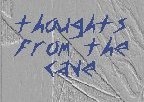

|
HAWTHORNE'S The Artist Of The Beautiful: Celebration of the Creative Spirit |
Recently, my interest in the writings of Nathaniel Hawthorne was renewed while watching Twice-Told Tales, a Vincent Price movie based upon three of Hawthorne's creations. I have read some Hawthorne in an American literature course during my earlier college days--I even wrote a paper on him once. But having pursed the creative arts for some time now, I saw Hawthorne in a completely different light. The atmosphere of the movie is thick with mystery. The plots are rich with images of old houses with secret chambers, magical elixirs which promise eternal youth, and a garden of beautiful but deadly flowers. When I began reading in a collection of Hawthorne's short stories, I was delighted to find that the richness of Hawthorne's writing completed images at which the movie only hinted. The first story that I read was The Artist of the Beautiful. Reading this story made me smile in recognition as it turned out to be somewhat of a literary metaphor for my own experience. First, a brief recount of the plot: In an undefined time and place, young watchmaker Owen Warland is busy about the task of achieving his lifelong vision--the endowment of a machine withspiritual beauty and life. The embodiment of Warland's pursuit is in the form of a delicate mechanical butterfly. But the road to creative fulfillment is not an easy one. Hawthorne surrounds the ambitious artist with a cast of foils. Peter Hovenden, retired watchmaker and Owen's former master, is the chief foil to Owen and his lofty pursuit. Hovenden is a practical, no-nonsense man who is constantly scoffing at his former apprentice for his foolish idleness. Hovenden's daughter, Annie, at first seems sympathetic to Owen, but, much to his disillusionment, she too fails to see the meaning in his quest. Robert Danforth, the local blacksmith, characterizes the earthy laborer who pounds his visions into shape through brute force. He is obviously admired by Hovenden and Annie who eventually marries this "rude man of earth and iron" with her father's firm approval. The story takes us to the peaks and through the valleys of Owen's creative journey as he experiences the influence of his surroundings. In one instance, the negative aura of Hovenden's presence causes Warland to fumble while working on his delicate mechanism, thus undoing months of labor. Owen, however, refreshes his spirit by wandering through the woods, watching water bugs and chasing butterflies. Finally, after many cycles of success and failure the "artist of the beautiful" achieves his goal through the invention of a wonderful mechanical butterfly imbued with life force. Owen has the opportunity to demonstrate his creation to Danforth, Annie, their young child, and even the skeptical Peter Hovenden. As the triumphant artist opens a small, finely fashioned box, a beautiful winged creature flies forth and lights upon the fingers of a dazzled audience. After the magical, mechanical insect flits about for a while, the child reaches out to clutch the butterfly and unintentionally crushes the delicate machinery into a small handful of glittering bits. Rather than being crushed himself over the apparent ruin of a lifetime's labor, Owen Warland calmly realizes that the true value of his work lies in the accomplishment of his goal. In Hawthorne's words, "when the artist rose high enough to achieve the beautiful, the symbol by which he made it perceptible to mortal senses became of little value in his eyes while his spirit possessed itself in the enjoyment of the reality." This little story struck a deep resonance in my being. Warland's conflict epitomizes the romantic concept of the artist struggling against the currents of misunderstanding, rejection, and simply, an apathetic world. From the beginning I could identify with Warland's situation as I have firsthand experience of the tension of machine versus spirit. I make my living as a mechanical engineer. My day-to-day world is populated by numbers, formulae, hardware, software, glowing CRT's, and the not-so-glowing faces of the "Peter Hovendens" of the engineering business. Of course, I realize this is the real world and physical needs must be met. But there is more to the essential than the practical. There is another type of food for which I deeply hunger: food for the spirit. My own spiritual diet includes worship, reading and a pursuit of the arts---particularly the visual arts. Inside of me there is an urge---a passion to create and give expression to my feelings, to somehow manipulate visual elements into the shape of my thoughts. There is also with this passion a vague sense of urgency. I felt this same urgency in Owen Warland's struggle to attain the "beautiful." At one point in the story Warland wonders if he will live long enough to realize his dream. Likewise, the sands of time slip through my own fingers. In addition, Hawthorne's content is beautifully clothed in rich language and finely crafted phrasing. His story is a perfect example of form fitting content. The antiquated language, the timeless atmosphere and setting all are in harmony with the theme. Whenever I see and feel such a unity of form and content in a work of art, it truly inspires me. And in reading this particular tale of Hawthorne, I captured a glimpse of the attainment of spiritual insight. Through some vicarious magic Owen Warland's struggles became my struggles, and his success became my success. Indeed, Hawthorne's celebration of the creative spirit became my own. Gregory Eanes April 21, 1993 (back) |